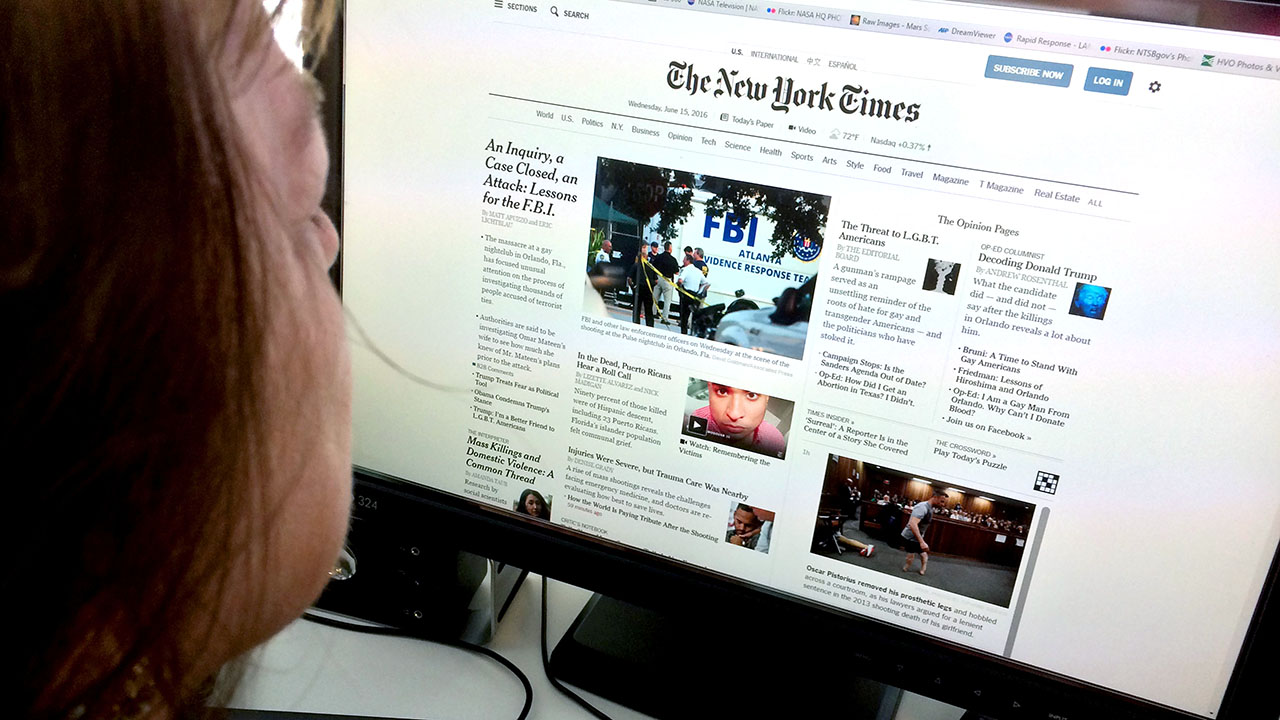Most Current Global Updates from DW News on Current Affairs
Most Current Global Updates from DW News on Current Affairs
Blog Article
The Evolution of Journalism in the Age of Information Online
In the swiftly transforming landscape of journalism, the digital age has actually ushered in a new era where the immediacy of on-line news improves both its production and usage. As electronic platforms multiply, they improve interactivity and expand the reach of journalism, yet simultaneously test traditional standards with the swift spread of information and false information alike. The surge of person reporters and independent voices even more complicates the story, adding to a dynamic yet perilous media community. As we browse these complexities, one have to question the future of journalistic honesty and exactly how it can be secured amidst these transformative adjustments.

Increase of Digital News Platforms
The rise of digital news platforms has actually basically changed the landscape of journalism, noting a change from standard print media to dynamic, online spaces. This advancement was moved by innovations in innovation and the enhancing accessibility of the internet, which allowed information to be shared swiftly and broadly. Unlike their print counterparts, electronic platforms can instantaneously update content, providing real-time information insurance coverage and analysis that attract the contemporary viewers's demand for immediacy and relevance.
Digital systems have actually likewise expanded the scope of journalism, enabling a diversification of perspectives and voices. With lower obstacles to entrance, independent reporters and smaller sized news organizations can reach worldwide audiences, challenging the monopoly when held by established media empires. This democratization of information has enhanced the public discourse, supplying varied stories and accommodating specific niche interests that were formerly underserved.
Furthermore, the combination of multimedia elements such as video clip, sound, and interactive graphics boosts storytelling, making news more available and engaging (dw news). This multimedia approach not just draws in a broader audience yet additionally help in the comprehension of complicated stories. Basically, digital systems have redefined journalism, cultivating advancement and versatility in an ever-evolving media setting

Effect of Social Media
Social media systems have additionally transformed journalism by altering exactly how news is consumed and shared. These platforms have actually equalized information circulation, allowing any person with web access to report events in real-time. This immediacy has actually placed conventional news outlets in a race to maintain, engaging them to take on faster reporting methods. In addition, social media has broadened audiences, giving journalists accessibility to worldwide viewership past geographical restrictions.

The interactive nature of social media cultivates engagement, enabling target markets to take part in discussions, share viewpoints, and add to information narratives. This communication boosts the dynamic between journalists and their target markets, advertising an extra participatory kind of journalism. Nevertheless, this additionally places enormous stress on journalists to produce web content that reverberates with audiences, often prioritizing sensationalism to capture attention.
Furthermore, social networks systems have ended up being crucial devices for journalists to source stories, gauge public viewpoint, and connect with market peers. By keeping an eye on trending subjects and user-generated web content, reporters can reveal tales that could or else be overlooked. Yet, the reliance on social media sites additionally requires an important analysis of resources to make sure the integrity of information shared. In this evolving landscape, flexibility continues to be important for journalists to prosper.
Difficulties of Misinformation
Among the digital revolution of journalism, one considerable difficulty is the prevalent spread of misinformation. In an era where details is abundant and quickly available, distinguishing between legitimate news and fabricated material has actually become progressively difficult. The sheer volume of details disseminated across numerous on-line systems usually obscures the line in between truth and fiction, posing a significant threat to the integrity of journalism.
False information can spread rapidly through social networks, where algorithms focus on engagement over precision, inadvertently amplifying incorrect narratives (dw news). This not just threatens public rely on media establishments yet additionally promotes an environment where misleading web content can affect popular opinion and decision-making procedures. The difficulty for reporters is twofold: to debunk frauds effectively and to promote strenuous standards of fact-checking and confirmation
Further that site complicating this issue is the visibility of deepfakes and sophisticated disinformation projects that leverage advanced modern technologies to produce misleading content equivalent from legitimate coverage. As these modern technologies develop, so must the tools and methods used by reporters to combat them. Addressing false information requires partnership in between media companies, technology firms, and policymakers to create thorough methods that secure the credibility of info in the electronic age.
Function of Citizen Reporters
Browsing the landscape of misinformation highlights the transformative effect of person reporters within the electronic realm. As standard media outlets grapple with the sheer speed and quantity of information circulation find out here online, resident reporters-- normal people armed with smart devices and access to social media-- are playing a significantly pivotal duty. These grassroots contributors have become critical in covering events swiftly, typically providing real-time updates from the ground prior to mainstream media can react.
Citizen reporters have equalized information coverage, intensifying voices that might otherwise remain unheard. By leveraging platforms like Twitter, Facebook, and Instagram, they supply varied point of views that challenge the stories frequently pressed by established media. This democratization, however, likewise presents obstacles. The lack of formal training or editorial oversight can result in the spread of unverified information, complicating efforts to differentiate fact from fiction.
Nonetheless, resident journalism is reshaping the media landscape, compelling standard electrical outlets to adapt by incorporating user-generated material into their coverage. By cultivating community interaction and motivating participatory journalism, these electronic writers contribute to an extra vibrant and comprehensive news ecosystem. As person journalists remain to evolve, their duty in shaping public discussion remains a crucial component of modern journalism.

Future of Journalistic Stability
As the electronic age remains to advance, the future of journalistic stability deals with extraordinary challenges and possibilities. The expansion of electronic systems has actually democratized information circulation, allowing a broader variety of voices to contribute to the news landscape. Nevertheless, this has actually additionally resulted in the spread of misinformation and the disintegration of count on in media. In this environment, maintaining journalistic honesty becomes critical, calling for adherence to strenuous moral standards and fact-checking processes.
The increase of artificial knowledge and algorithm-driven content curation further complicates the landscape. While AI can improve reporting by analyzing large datasets and determining fads, it additionally postures risks of bias and manipulation. Reporters should for that reason remain attentive, making certain that technology serves as a tool for reality as opposed to distortion.
In addition, the economic stress on standard media outlets demand cutting-edge company models to maintain top quality journalism. Subscription-based versions, not-for-profit financing, and collaborations with tech firms are arising as potential services. Yet, they must be sought address without jeopardizing editorial freedom.
Inevitably, the future of journalistic integrity depends upon the commitment of media and journalists companies to promote openness, liability, and a steadfast commitment to reality, amidst a rapidly changing electronic world.
Final Thought
The evolution of journalism in the digital age offers both opportunities and obstacles. The surge of digital information systems and social media has actually equalized details dissemination, equipping a diverse selection of voices, including person reporters.
The surge of digital news platforms has actually fundamentally transformed the landscape of journalism, noting a shift from traditional print media to vibrant, on the internet spaces. With lower barriers to access, independent reporters and smaller news companies can reach international audiences, testing the syndicate as soon as held by developed media conglomerates.Social media systems have better reinvented journalism by modifying how information is consumed and shared. As typical media electrical outlets grapple with the sheer rate and quantity of information circulation online, person journalists-- regular people equipped with mobile phones and accessibility to social media-- are playing a progressively critical function. The increase of electronic information platforms and social media has democratized info circulation, empowering a varied variety of voices, including resident reporters.
Report this page